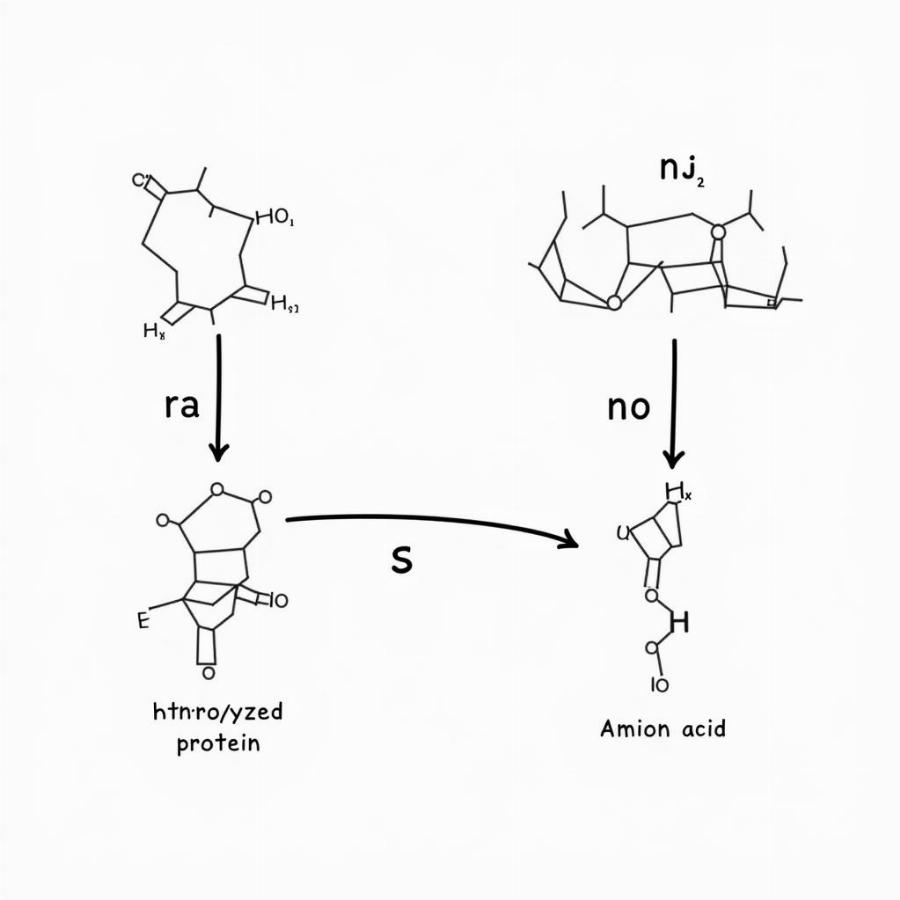Hydrolized protein dog food is a specialized diet designed to help dogs with food allergies or sensitivities. It’s becoming increasingly popular as more pet owners recognize the importance of proper nutrition for their furry friends. If you suspect your dog is struggling with food allergies, this guide will provide you with everything you need to know about hydrolyzed protein dog food, from its benefits and how it works to choosing the right formula for your dog’s specific needs.
Understanding Hydrolized Protein
What exactly is hydrolyzed protein? Simply put, it’s protein that has been broken down into smaller pieces. Think of it like pre-digesting the protein, making it easier for your dog’s body to absorb and less likely to trigger an allergic reaction. Normally, when a dog eats, its immune system recognizes proteins in the food as harmless. However, in dogs with food allergies, the immune system mistakenly identifies certain proteins as threats, triggering an allergic reaction. By using hydrolyzed protein, the protein fragments are too small for the immune system to recognize as allergens, effectively preventing a reaction.
 Diagram of Hydrolyzed Protein
Diagram of Hydrolyzed Protein
Benefits of Hydrolized Protein Dog Food
Why choose hydrolyzed protein dog food? There are several key benefits:
- Allergy Management: The primary benefit is its ability to manage food allergies. By reducing the risk of allergic reactions, your dog can enjoy a more comfortable life free from itching, scratching, and digestive upset.
- Improved Digestion: The smaller protein fragments are easier to digest, which can be especially beneficial for dogs with sensitive stomachs.
- Enhanced Nutrient Absorption: The pre-digested nature of hydrolyzed protein allows for better nutrient absorption, ensuring your dog gets the most out of their food.
Choosing the Right Hydrolyzed Protein Dog Food
Selecting the appropriate hydrolyzed protein dog food is crucial. Not all formulas are created equal, and different dogs have different needs.
Protein Source
The protein source in hydrolyzed dog food is extremely important. Common sources include chicken, beef, and soy. However, if your dog has a known allergy to a specific protein, you’ll need to choose a formula that uses a different source. Novel proteins, such as venison, duck, or kangaroo, are less common allergens and are often used in hydrolyzed protein diets.
Other Ingredients
Pay close attention to the other ingredients in the food. Look for formulas that are free of artificial colors, flavors, and preservatives. Also, consider your dog’s age, breed, and activity level when choosing a formula. Puppies, senior dogs, and highly active dogs have different nutritional requirements.
How to Transition to Hydrolyzed Protein Dog Food
Switching your dog to a new food should be done gradually to avoid digestive upset. Start by mixing a small amount of the new food with their current food. Gradually increase the proportion of the new food over several days until your dog is eating only the hydrolyzed protein diet.
When to Consult Your Veterinarian
While hydrolyzed protein dog food can be highly effective, it’s important to consult your veterinarian before making any dietary changes, especially if your dog is experiencing allergy symptoms. Your vet can help you determine if a food allergy is the cause of your dog’s symptoms and recommend the best course of treatment.
Conclusion
Hydrolized protein dog food can be a game-changer for dogs struggling with food allergies. By providing a hypoallergenic protein source, these specialized diets can help alleviate allergy symptoms and improve your dog’s overall health and well-being. Remember to consult your veterinarian for personalized advice and to choose a formula that meets your dog’s individual needs.
FAQ
- What are the common signs of food allergies in dogs? Itching, scratching, skin infections, ear infections, vomiting, and diarrhea.
- How long does it take to see results with hydrolyzed protein dog food? It can take several weeks to see significant improvement.
- Is hydrolyzed protein dog food expensive? It tends to be more expensive than regular dog food, but the benefits often outweigh the cost.
- Can I give my dog treats while they are on a hydrolyzed protein diet? Only if they are specifically formulated for dogs with food allergies.
- Can puppies eat hydrolyzed protein dog food? Yes, there are formulas designed specifically for puppies.
- What if my dog doesn’t like the taste of hydrolyzed protein food? You can try mixing it with a small amount of warm water or bone broth (ensure it’s allergy-friendly).
- Can hydrolyzed protein dog food cure food allergies? It manages the symptoms, but it doesn’t cure the underlying allergy.
Further Reading
- [Link to article about dog food allergies on Beaut Dogs]
- [Link to article about choosing the right dog food on Beaut Dogs]
- [Link to article about dog nutrition on Beaut Dogs]
Beaut Dogs is your one-stop shop for all things related to dog care. We offer a wealth of information on dog breeds, health, nutrition, and more. When you need expert advice, contact us at [email protected] to get your questions answered by the Beaut Dogs team. Visit us at https://beautdogs.com to learn more!